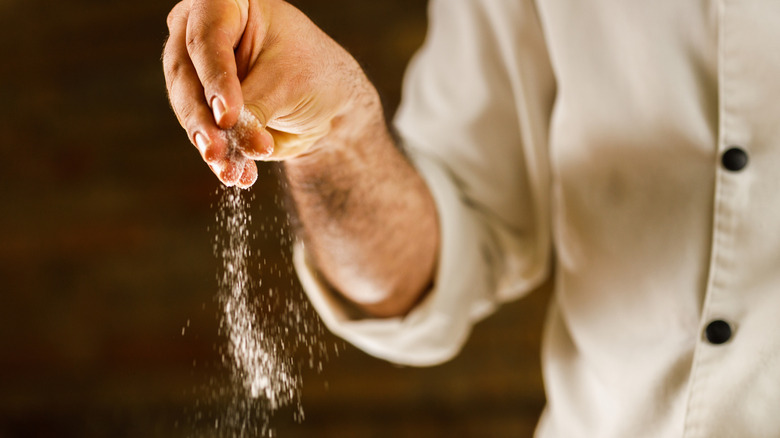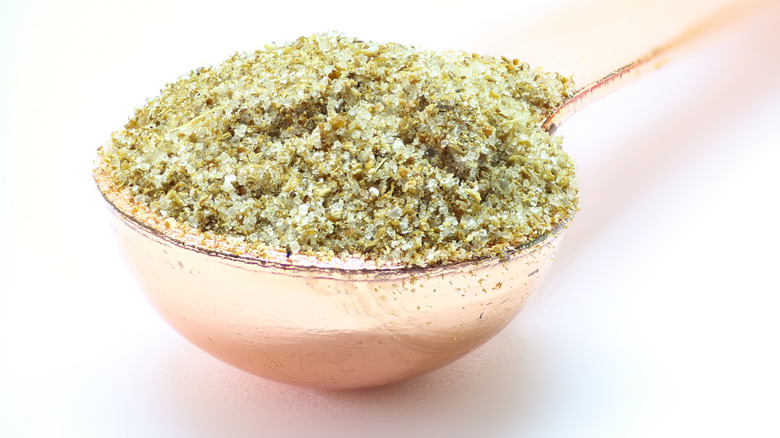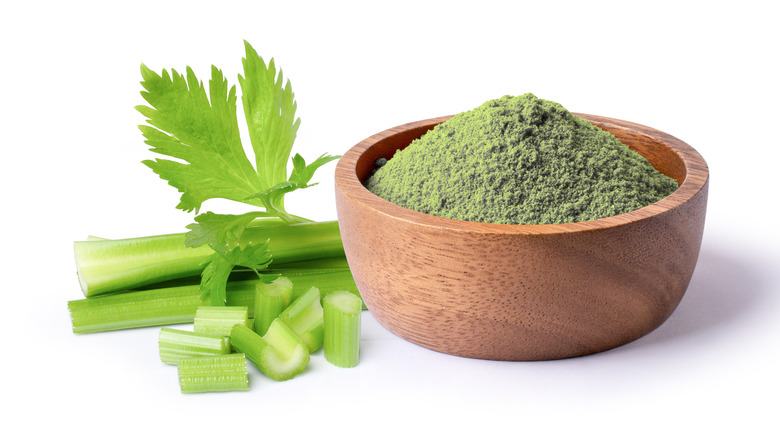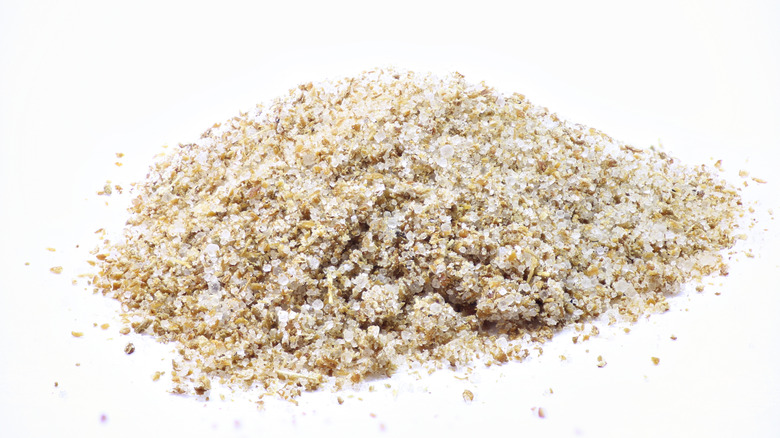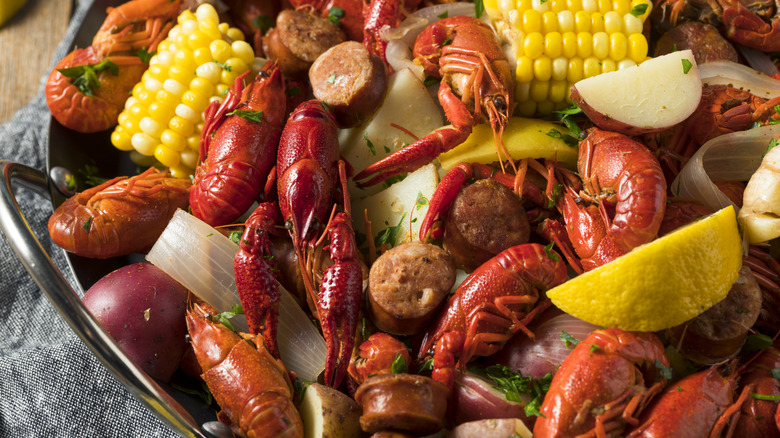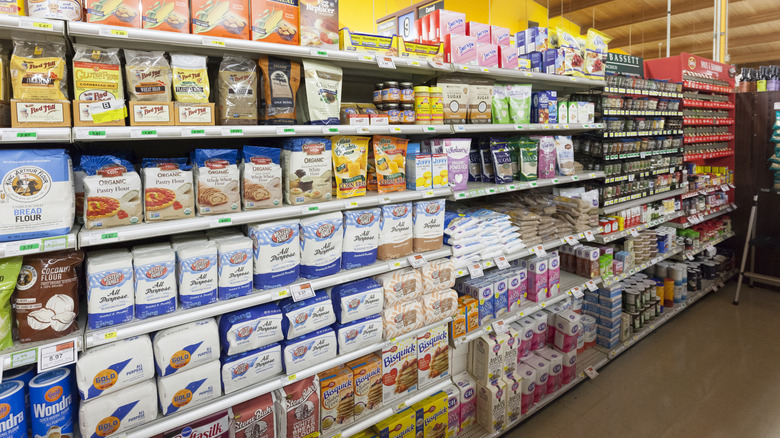What Is Celery Salt And What Is It Used For?
We may receive a commission on purchases made from links.
You've probably eaten celery salt at some time without even knowing it, because it's used to season so many dishes. For example, celery salt tastes great on a burger and features prominently in seafood dishes and in Cajun cuisine. It's also often used in a wide range of seasoning mixes. Chances are, you may already have some in your spice cabinet — and you should add it if you don't already have it.
My 15+ year career in the food industry taught me that spices are king. They can enhance or alter the flavor profile of any food or drink, whether that be when baking, cooking, or mixing cocktails. Understanding what each spice in your repertoire is and how it can be used is crucial for crafting the best dishes. If you're looking to enhance your understanding of celery salt so you can better harness its unique flavor profile, you've come to the right place. By the end of this comprehensive ingredient guide, you should be an expert on celery salt and its many uses.
What is celery salt?
Celery salt is a spice primarily containing celery seed, which has long been used in Eastern medicine. Ancient Indian Ayurvedic medical practitioners would use celery seed to treat a range of illnesses, from colds to liver disease.
Celery seeds are harvested from celery (Apium graveolens), which is a vegetable many people may have in their fridges right now. It belongs to the same family as anise, caraway, carrot, coriander, cumin, dill, fennel, parsley, and parsnip. That's why celery and carrots pair so well and are two of the three starring aromatic vegetables of a mirepoix, which is a foundation for many Southern and Cajun dishes (with onions as the third, by the way). At a molecular level, celery seeds include flavonoids, which are naturally occurring antioxidants found in various fruits and vegetables. They also include linoleic acid, an omega-6 fatty acid, and coumarins that add flavor to various foods.
The only other ingredient in this seasoning is salt. Although table salt is most often used, sea salt is an appropriate substitute. Salt is a fantastic flavor enhancer that helps accentuate the celery taste in this seasoning, but it also means that celery salt is full of sodium. You should be cautious about using additional salts alongside it.
How is celery salt made?
The creation of celery salt involves finely crushing celery seeds and combining them with salt. Many commercial options will also include an anti-caking agent, like sodium dioxide, calcium silicate, or cellulose, to stop the ingredients from clumping together, but this shouldn't affect the taste of celery salt or how you use it. Once these ingredients are combined, you're left with a coarse brownish powder reminiscent of damp beach sand.
If you have celery seed on hand, you can make homemade celery salt. This is helpful if you don't have any and a recipe calls for it. Start by using a blender or food processor on the celery seed. You want small flecks, not a fine powder. If you don't already have one, I highly recommend this Ninja Food Processor. It makes quick work of celery seeds or any other ingredients, and I find it very easy to clean.
Combine two parts of your processed celery seed with one part salt. If (like me) you prefer a lighter celery flavor, you can combine even parts of either ingredient or use one part celery seed to two parts salt.
Celery salt vs. celery seed vs. celery powder
Celery seed is the primary ingredient in celery salt and celery powder, but these three are not the same spice. Although they can sometimes be used interchangeably, that won't always be the case.
Celery seed purchased in stores is still whole and a greenish-brown. These intact variants are very small; you'll immediately notice they're distinctly different visually and textually from the pulverized seed used in celery salt. Since the seeds aren't diluted, they provide a much stronger celery flavor. Also, there's no sodium, which makes it a better option for those needing to restrict their salt intake.
Celery powder is a finely ground version of the seed that can be used to cure certain meats because it's a natural nitrite source. Visually, the powder is similar to green dust, which is a stark contrast to the damp beach sand appearance of celery salt. The aroma and taste of celery powder are more concentrated than either the seed or celery salt, so you'll want to season with it sparingly. I've most often used it in soups, sauces, dressings, and similar dishes when looking for a very pronounced earthy flavor that's much stronger than what celery salt provides.
What does celery salt taste like?
As its name might suggest, celery salt has a very strong taste of aromatic celery, with a salty undertone and a subtle hint of bitterness. For reference, celery has a zesty, earthy flavor that I find fairly similar to dill or fennel, but much milder. With this distinctive flavor, celery salt is a favorite seasoning of many chefs, like Emeril Lagasse. It can be eaten on raw foods or added during cooking, and the change in taste when used in these two different ways is very slight. However, a refined palate may notice that celery salt becomes milder when cooked in a meal and develops the slightest sweetness that's so subtle it's easy to miss.
When used as part of a spice mix, the bold celery taste doesn't come through quite as strongly. Instead, celery salt provides a slightly bitter edge balanced with crisp, earthy tones. This flavor profile pairs well with salt, pepper, thyme, garlic powder, onion powder, and paprika in spice mixes.
How to cook with celery salt
Celery salt is a versatile seasoning that can be used in many dishes calling for a zestier, earthier flavor profile. Some of your favorite spice mixes probably include celery salt, like Old Bay Seasoning, which is a perfect pairing for seafood like shrimp or fish. Another is Jack Stack Barbecue Dry Rubs, which give excellent flavor to steaks, chicken, or ribs. Many Greek and Cajun seasoning mixes also include celery salt.
Alone, you can use celery salt in things like potato salad, deviled eggs, or coleslaw to give them a unique earthy bite. Add a sprinkle at the very end, before serving, to allow the fullest tang to come through. If you're a big fan of celery, I suggest using celery salt in dips and soups. Adding this seasoning to homemade ranch dressing really levels up the flavor alongside the other herbs and spices. A few dashes of celery salt in tomato soup bring a uniquely rustic flavoring I find mouthwatering.
Where to buy celery salt
You can find celery salt in the spice rack of most chain grocery stores year-round, as well as any other retailers that sell spices. For example, you may find it at dollar chain stores or small local grocery stores, although this can vary by location. Most retailers have their own store-brand seasonings, which are often as good as brand names. However, my personal favorite brands for any seasonings are McCormick, Spice Island, and Morton & Basset. If you're wary of trying your local store's brand, these three options are always a safe bet in my book.
An easy way to stock your pantry with celery salt is to buy it online. Here are a few places you can order in the comfort of your own home and have it delivered straight to your front door:
Purchase celery salt on Amazon for $5.66
Purchase celery salt at Walmart for $5.27
Purchase celery salt at Target for $1.79
Nutritional information about celery salt
Like many other seasonings, celery salt generally has zero calories, fat, and sugars. The only thing it contains of any significance is sodium. Although some believe celery salt is healthier because it contains less salt, there's no strong evidence of this. However, there is some good news if you're worried about adding celery salt or other sodium-containing seasonings to your diet. According to the U.S. Food and Drug Administration (FDA), over 70% of the sodium you consume comes from convenience foods, not seasonings you add — so most of your sodium is likely coming from things like chips, pizza, crackers, popcorn, and frozen meals.
Many people can eat salt in moderation without issue, but those with certain health conditions may need to limit their total daily sodium intake. If this applies to you, I recommend choosing celery seed or powder over celery salt. Cooking at home is the easiest way to lower your sodium because it keeps you in control of added salt. There are many easy recipes for perfect home-cooked meals you could try — and you can always leave out the salt in any recipe, if need be.
How to store celery salt
You should store your celery salt somewhere cool and dry, like the pantry or a dedicated spice cabinet. Avoid exposing it to any heat or lighting for prolonged periods, as this can alter the taste and texture. Although spice racks above the stove are convenient, they don't provide optimal conditions for your seasonings and should be avoided.
As an example of what works best, I have a dedicated spice cabinet beside the stove. This is super convenient while still protecting the seasonings against flavor loss, color changes, or moisture. Getting moisture in your celery salt (and other seasonings) can cause clumps to form, making it challenging to measure or use. A cool, enclosed space also helps avoid any potential cross-contamination.
When stored properly, the McCormick celery salt has a shelf life of almost three years and, it's safe to assume that options from other brands can last a similar time. Of course, once you begin using your celery salt and discovering the many dishes that benefit from its distinct earthy profile, I doubt your shaker will last that long!
